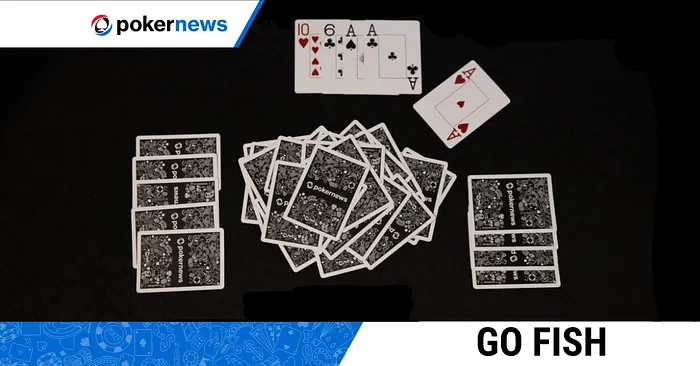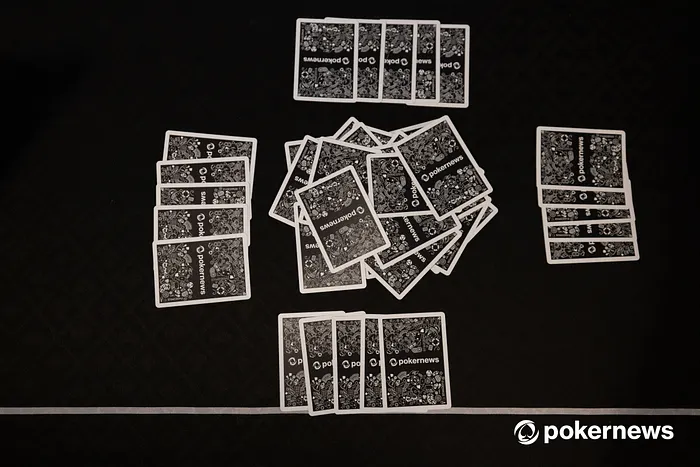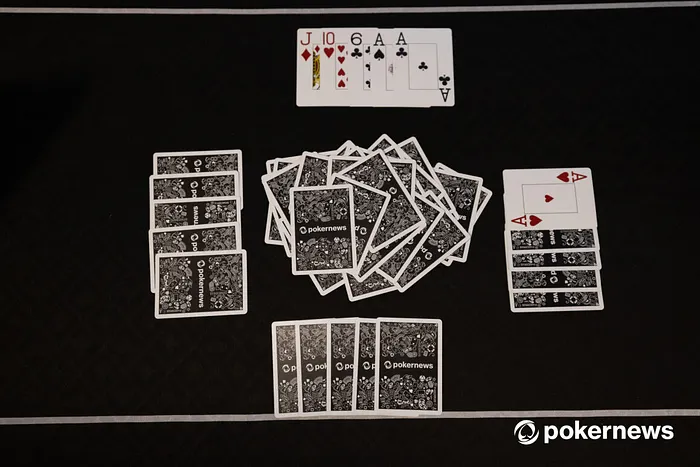Go Fish Rules Explained - A Comprehensive Guide to Gameplay

Embark on a journey through the fundamental rules of Go Fish. This comprehensive guide explores the mechanics, objectives, and dynamics that define the classic card game. Whether you're new to Go Fish or seeking a refresher, this guide provides clarity on the rules that govern the gameplay and contribute to a fun and engaging experience.
Basics of Go Fish Gameplay
Embark on the journey of understanding the basics of Go Fish gameplay, a classic card game enjoyed by players of all ages. The fundamental principle of the game revolves around creating pairs of matching cards. Each player aims to build sets by asking opponents for specific cards. The dynamic lies in the strategic decisions players make as they inquire about cards they need to complete pairs in their hand.
The objective of Go Fish is straightforward: accumulate as many pairs as possible to secure a winning hand. Players achieve this by successfully asking opponents for cards that match those already in their possession. The social aspect of the game shines as players interact through queries, fostering an engaging atmosphere.
Asking for cards becomes a strategic art, as players must not only seek the cards they lack but also anticipate opponents' holdings. The balance between acquiring needed cards and potentially revealing one's strategy adds an exciting layer to Go Fish gameplay.
In summary, this section provides a comprehensive introduction to the foundational rules of Go Fish, emphasizing the objective of forming pairs, the role of strategic card requests, and the dynamic interactions that make this card game a timeless favorite.
Setting Up the Go Fish Game
Setting up a Go Fish game is a crucial precursor to the enjoyment that follows. Begin by ensuring you have a standard 52-card deck, removing any jokers. The game accommodates 3 or more players, making it ideal for gatherings or family game nights.
To commence, the dealer thoroughly shuffles the deck to guarantee a random distribution of cards. Subsequently, the dealer distributes a set number of cards to each player, usually around 5 cards for a standard game. The remaining deck becomes the fishing pond, placed face down at the center of the playing area.

A key element in setting up Go Fish is establishing the fishing pond, where players will draw cards during their turns. The fishing pond serves as the communal space from which players request specific cards to form pairs. This central pile becomes the focal point of the game, as players strategize and interact to collect pairs and score points.
By understanding the essential steps of shuffling, dealing, and establishing the fishing pond, players ensure a smooth transition into the heart of Go Fish gameplay. This section provides a comprehensive guide to setting up the game, laying the foundation for an enjoyable and strategic card-playing experience.
Object of the Game - Forming Pairs
In Go Fish, the fundamental goal is to form pairs of matching cards, turning a simple deck of playing cards into a delightful pursuit of strategic pair-building. The essence of the game lies in players actively seeking out counterparts to the cards they hold in their hand.
Players begin by requesting a specific rank from an opponent. For example, a player might inquire, "Do you have any threes?" If the opponent possesses cards of that rank, they must relinquish all the relevant cards to the requester, who then gets to form a pair. This interaction continues as players take turns asking and offering cards, creating an engaging atmosphere of anticipation and calculation.

Strategic thinking comes into play as players consider which cards to ask for, trying to discern their opponents' holdings and deducing the best moves to enhance their own pairs. As the game progresses, the tableau evolves with pairs accumulating in players' hands, turning the quest for matches into a dynamic and interactive experience.
The challenge lies not only in forming pairs but also in adapting one's strategy based on the changing landscape of the game. This section unravels the nuances of the primary objective in Go Fish, offering players a comprehensive understanding of the pair-forming dynamics that make this card game both enjoyable and strategically rich.
Asking for Cards - The Go Fish Interaction
In Go Fish, the art of asking for cards is a pivotal element that adds a layer of strategy to the gameplay. This section sheds light on the intricacies of the player interaction dynamics and the nuances of making successful requests.
Players take turns asking a specific opponent for cards of a particular rank to create pairs. The choice of opponent is a tactical decision, often influenced by a desire to obtain cards that would be beneficial for forming pairs. Engaging in strategic communication becomes essential as players aim to deduce which opponents might hold the desired cards.
The act of asking for cards is not merely a straightforward inquiry but a subtle dance of strategy and deduction. Players must gauge their opponents' reactions to formulate a better understanding of their holdings. As the game progresses, the effectiveness of asking for cards evolves, requiring players to adapt their approach based on the unfolding tableau of pairs and the shifting dynamics of their opponents' hands.
This section delves into the strategic aspects of the Go Fish interaction, providing players with insights into the art of requesting cards and leveraging this fundamental aspect of the game to their advantage.
Go Fish Rules Variations
Go Fish, like many classic card games, offers room for creativity and adaptation through various rules variations. This section introduces players to the diverse landscape of Go Fish rules, encompassing both house rules and regional differences that add a unique flavor to the game.
House rules often reflect the preferences and agreements of a specific group of players. These can range from adjustments in the number of cards dealt, the method of forming pairs, to introducing additional strategic elements. For instance, some groups may implement rules about how many cards can be requested at a time or add twists to the fishing pond dynamics.
Regional variations in Go Fish rules contribute to the richness of the game across different cultures and communities. Certain regions may have distinctive ways of scoring, specific rules around pairs, or variations in the penalties for incorrectly declared pairs.
Exploring these Go Fish rules variations not only adds an element of surprise and excitement to the gameplay but also provides players with the opportunity to tailor the game to their preferences. This section serves as a guide to the flexible nature of Go Fish, encouraging players to experiment with different rule sets and embrace the diversity that makes each round of Go Fish a unique experience.
Top 5 Go Fish Rules to Remember
To enhance your Go Fish experience, it's crucial to keep these top 5 rules in mind. Firstly, the fundamental goal is to form pairs and accumulate points. This involves asking opponents for specific cards strategically, constituting the core interaction of the game. The dynamic of requesting cards from opponents plays a pivotal role, guiding the flow and strategy of the game.
Equally important is the proper execution of shuffling and dealing cards. Ensuring a fair and randomized distribution sets the foundation for an equitable and enjoyable game. As a courteous player, adapting to any house rules or variations in gameplay is essential. Go Fish often accommodates various rule sets, and flexibility adds an element of surprise and excitement to each round.
Remembering these key rules will not only ensure a smooth Go Fish experience but also contribute to a harmonious and engaging game with fellow players. Whether you're a novice or a seasoned player, adherence to these rules enhances the overall enjoyment of this classic card game.
FAQs - Go Fish Rules Explained
Can players ask for a specific rank of card, or must they be specific about the exact card they want in Go Fish?
In Go Fish, players must be specific about the exact card they want. Asking for a particular rank, such as "Do you have any kings?" ensures clarity in communication and adheres to the game's rules.
Are there variations in how players establish the fishing pond at the beginning of a Go Fish game?
Establishing the fishing pond typically involves shuffling the deck and dealing a set number of cards to each player. While variations may exist, the core concept remains consistent across most Go Fish games.
What happens when a player asks for a card, and the opponent doesn't have it in Go Fish?
If an opponent doesn't have the requested card, the asking player "goes fish" by drawing a card from the pond. This adds an element of chance to the game, and the turn passes to the next player.
Are there specific rules regarding the number of cards a player can ask for in a single turn in Go Fish?
Generally, players can ask for a specific rank from an opponent in Go Fish. There isn't a strict limit on the number of cards requested, allowing for strategic decisions based on the player's hand.
How is the winner determined in Go Fish, and what factors contribute to overall victory?
The winner in Go Fish is determined by accumulating pairs of matching cards. The player with the most pairs when all cards are paired is declared the winner. Strategic card asking, memory, and adaptability to house rules contribute to overall victory.
